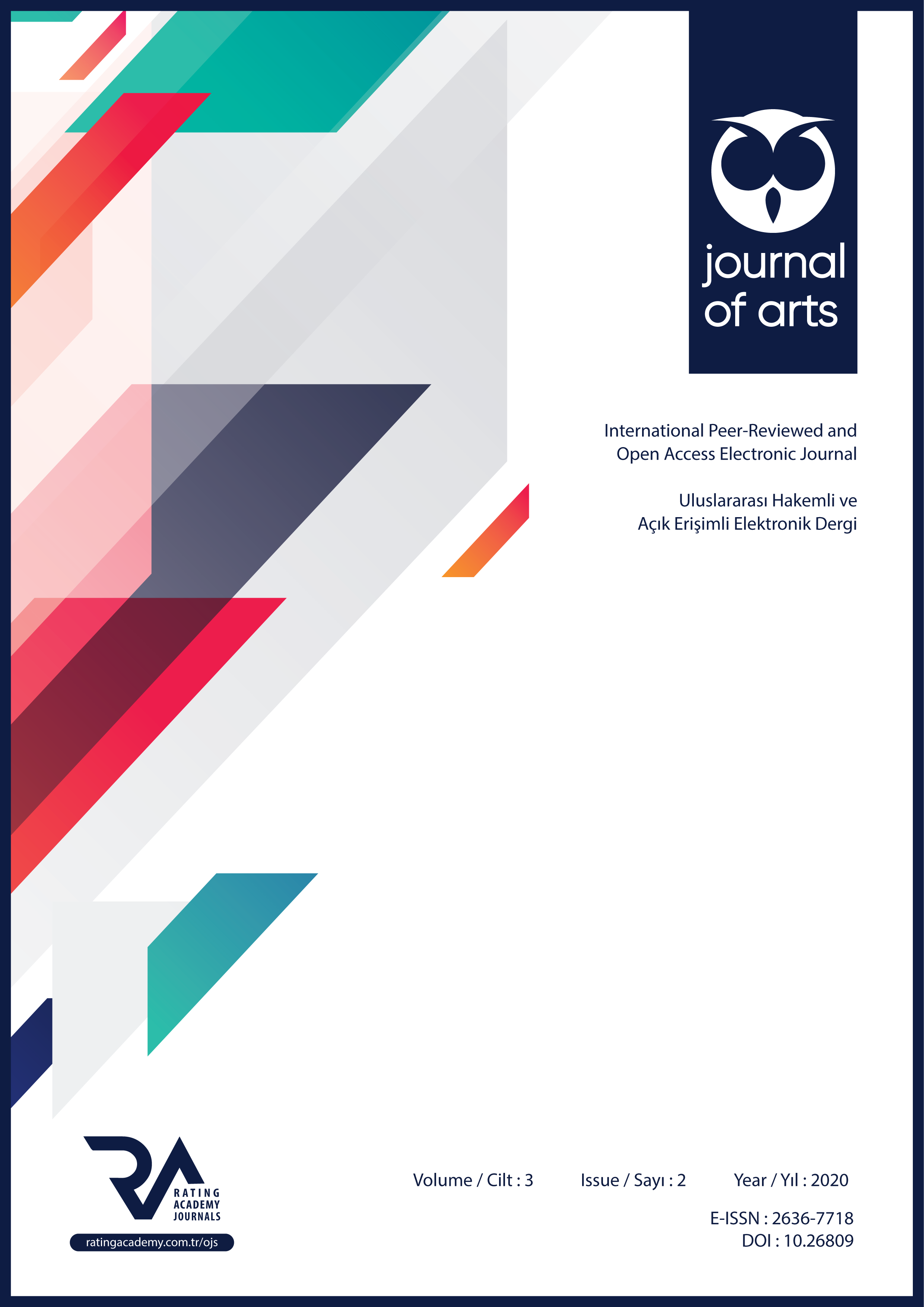Abstract
In Ancient Greece, in accordance with Plato’s thoughts and assumptions on the “truth” a sharp line is drawn between those who are trying to turn to truth and those who are not. On the one hand, there are artisans, that is, those who are competent in the form of an idea in the world of manifestations, on the other those who recreate the idea-object connection, pronounced as an artist, in the world of manifestations. So Aristotle, with the help of the concept of mimesis (imitation), examines the actions of the era that, far from the aim of reaching the truth, are reduced to the human dimension. The definition of the work done by the artists, in short, the art can be linked with a mask (dramatical speaking: persona). While the idea of art (the essence behind the mask) does not change, its appearance (front face) appears in different forms in the world of manifestations. Through this connection, the theater, which is defined as an imitation art, appears to have undergone no change in form, and in fact differed in comparison to the ancient Greek and Renaissance, its process in two different periods of time, the idea it carries, and the shape it reflects.
References
ARİSTOTELES (2012). Poetika, çev. İsmail Tunalı, İstanbul: Remzi Kitabevi.
BURCKHARDT, J. J. (1928). The civilization of the Renaissance in Italy, Crows Nest: G. Allen & Unwin, ltd.
BROCKETT, O. G., & Bayramoǧlu, İ. (2000). Tiyatro Tarihi, Dost Kitabevi.
DOLEZEL, L. (2000). Heterocosmica: Fiction and possible worlds, JHU Press, 2000.
ERVINE, St. J. (1928). Introduction. Complete Works of William Shakespeare, London & Glosgow: Collins Clear Type Press.
ESSLIN, M. (1972). Theatre of the Absurd. Penguin books Limited.
FARRELL, J., & Puppa, P. (Eds.). (2006). A History of Italian Theatre, Cambridge: Cambridge University Press.
GOETHE, J. (1798). Einleitung in die Propyläen. Propyläen, I.
MANSFIELD, E. (2007). Too Beautiful To Picture: Zeuxis, Myth, and Mimesis, Minneapolis: University of Minnesota Press.
PLATON (2005). Devlet çev. C. Saraçoğlu & Veysel Atayman, İstanbul: Bordo-Siyah Yayınları.
PLINIUS (1961). Natural History, 9, 33-35, trans. H. Rackham, Cambridge: Harvard University Press.
POTOLSKY, M. (2006). Mimesis, New York, NY: Routledge.
THOMSON, J. A. K. (1915). The Greek Tradition: Essays in the Reconstruction of Ancient Thought, Crows Nest: G. Allen & Unwin Limited.

This work is licensed under a Creative Commons Attribution 4.0 International License.
Copyright (c) 2020 Holistence Publications


